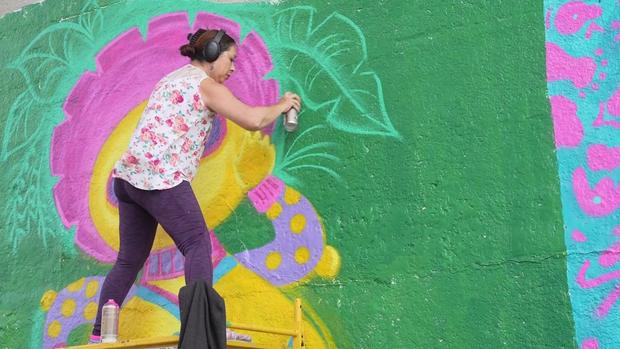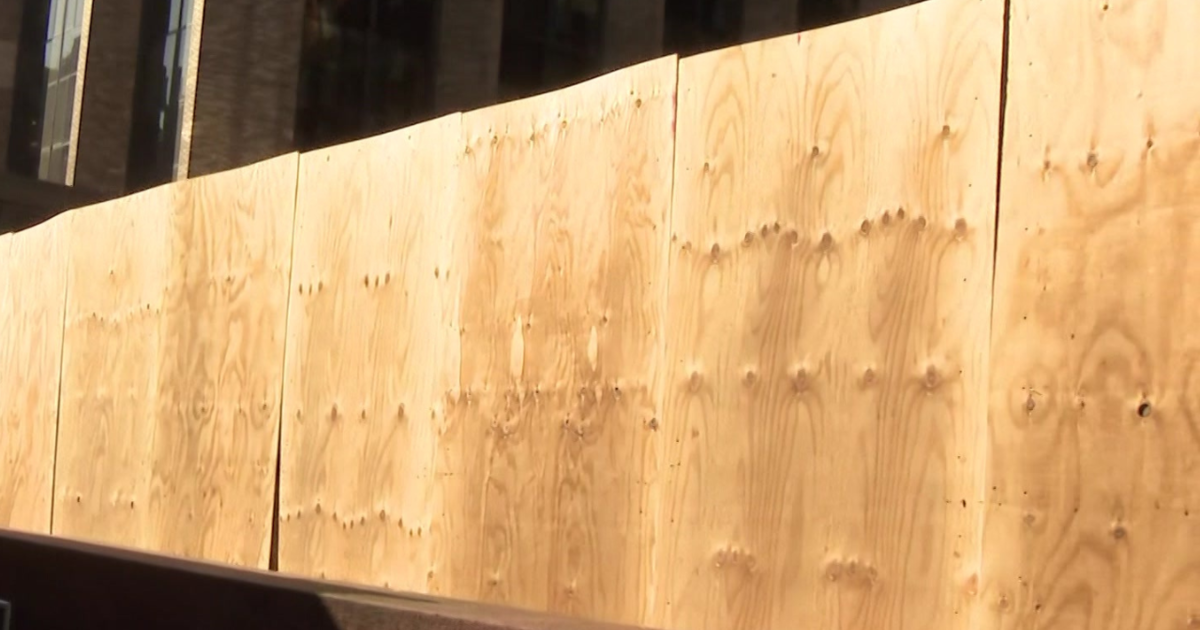Snapshot New York: Lady Pink reflects on her groundbreaking work in street art
NEW YORK - Art is the way we express ourselves as makers and creators. We find all kinds of ways to behold art. It's used as a way of helping us express our hopes, dreams and emotions.
Sometimes art can bleed into politics, social justice, and philosophy. But can art alter our views of the world? And can it inspire us to change?
A street artist unloaded supplies in Astoria, Queens in a dark underpass below Hell Gate Bridge. Some called her "the Queen of the Night," though she plays it off.
"I'm just an artist, a painter, a muralist," she said.
Her name was known throughout the city, but few had seen her face. To some, she was a hero. Others labeled her an outlaw. Despite her many labels, everyone agreed she became a force to be reckoned with. She's known as "Lady Pink."
"I grew up in these neighborhoods. Astoria is my neck of the woods," Lady Pink said. "I lived in a private house, so I would jump out the window with my bag of paint, quietly, and go to the worst neighborhood in New York City because that's where they parked the trains."
That was back in the 1970's. The work she's doing now isn't illegal. In fact, it's a commissioned work of art. Her crew helping her paint the mural are her assistants Matt, Chloe, Nikki and her husband, Roger.
"Graffiti and street art, with permission, can be a platform and a voice, and I've used it for activism as much as I could. Now I'm doing mental health issues and burnout. Burnout that college students feel, and burnout that even grownups feel," Lady Pink said.
After two days of prepping, the crew spent eight hours putting the finishing touches on a colorful mural that beautifies the neighborhood, and with a meaningful message.
"In the street, our message has to be crystal clear and clearly understood by the people walking by very quickly. We will have a couple words and hashtag that gives it a title or idea of what this is about," Lady Pink said.
Her career started when she was 15, on the darkest of streets in New York. She was the only female capable of competing with the boys in the graffiti subculture.
"I would say we were more like pirates just taking what we please, not asking 'May I?' Just taking what we wanted. Or adventurers, conquerors. Like St. George going out to slay the dragon. Sometimes the dragon slays him," Lady Pink said.
Graffiti really refers to the stylized lettering - "wild style," which also happens to be the title of the first motion picture on the hip hop culture. Lady Pink had a starring role. In one scene of the 1982 film that was partly scripted but mostly documentary, a 16-year-old Lady Pink said, "We got a few jobs lined up. Store gates, signs. We're trying to do a lot for the community and liven up a few things. Trying to make it a job. Trying to make it a living."
"I didn't say that. Really, did I?" Lady Pink said. "OK, so it's true. I'm doing this the rest of my life. Forty three years, and I'm going strong. I still exhibit in galleries, I do mural commissions, I work with students. That's my favorite," she said. "Full circle."
"Doesn't that feel good to know that you have achieved that dream you set out for yourself?" CBS2's Steve Overmyer asked.
"I would be very hard to believe that. We were painting subways, trying to figure out what we were going to be when we grew up. Sure, we're selling paintings a little bit, but that will fade away. I was going to study architecture. So maybe I would be an architect now perhaps," Lady Pink said.
The path she chose in art continues to take her around the world. She had her first solo gallery show at the age of 21. Her work has since been shown in the Whitney Museum, the Metropolitan Museum of Art, and sold in the high-end art world at Sotheby's. Lady Pink is the prime example of how art can change minds. She helped transform how we look at graffiti art, and street artists.
"Street art is done by everyone for everyone. It is up and down the streets. Like you said, you lived with the murals I've painted all my life here in Astoria. And that is my whole purpose of being," Lady Pink said.
Not everything went according to plan while painting the mural.
"I have two purples of the same exact thing," Lady Pink said. She needed a different shade of purple to give her art a three dimensional look, but none were found in her bag.
Fortunately, another artist on site had what she needed.
"You only have what you bring. You can't go get anything else, and if what you bring is malfunctioning, you have to innovate. You can't complain about it, you got to get to it and fix it, you know? So, if I can't shade with a dark purple, I'll shade with a blue, but I found a dark purple. Just what I needed," she said.
Lady Pink learned her style on the streets in the '80s. The world of graffiti artists was not for the faint of heart.
"We would go climbing walls and going through some crazy missions just to get into the train yard or a tunnel or a layup," she said.
A layup is the end of a train line, where subway cars were stored overnight.
"You try to paint your train in the dark and listen very quietly. You listen for rustling noises and hope it's not the police. And hope it's only some rats scurrying at your feet," she said.
Her art made a statement, giving voice to a view of New York from a woman's perspective. It made her art a beacon of hope, and a source of pride - especially when her painted train rolled past her.
"To see our subway trains ride by for anybody was - you turn into a 5-year-old kid in glee saying, 'I did it ! I did it! I did it!' I succeeded in the middle of the night under such stressful conditions. It's an amazing feeling watching your train roll by," she said.
From the trains to museums, Lady Pink helped legitimized graffiti art, earning acceptance in the art world as a form of self-expression.
"Graffiti art was born in NYC in the '60s, invented by teenagers when the city was in a dark, dark place. And then there came this energy. This creativity out of nothingness because it's in all of us to create," Lady Pink said.
Now the artist has become part teacher, using her experience to help steer the next generation, using her years of expertise and overcoming mistakes to help a 17-year-old assistant figure out a problem.
"I hope it inspires them to do art themselves, and get other commission walls, and continue beautifying this neighborhood. I hope to inspire them to reach out and get help when things are overwhelming to them. And that they are not alone and there's always someone out there that cares for you," Lady Pink said.






